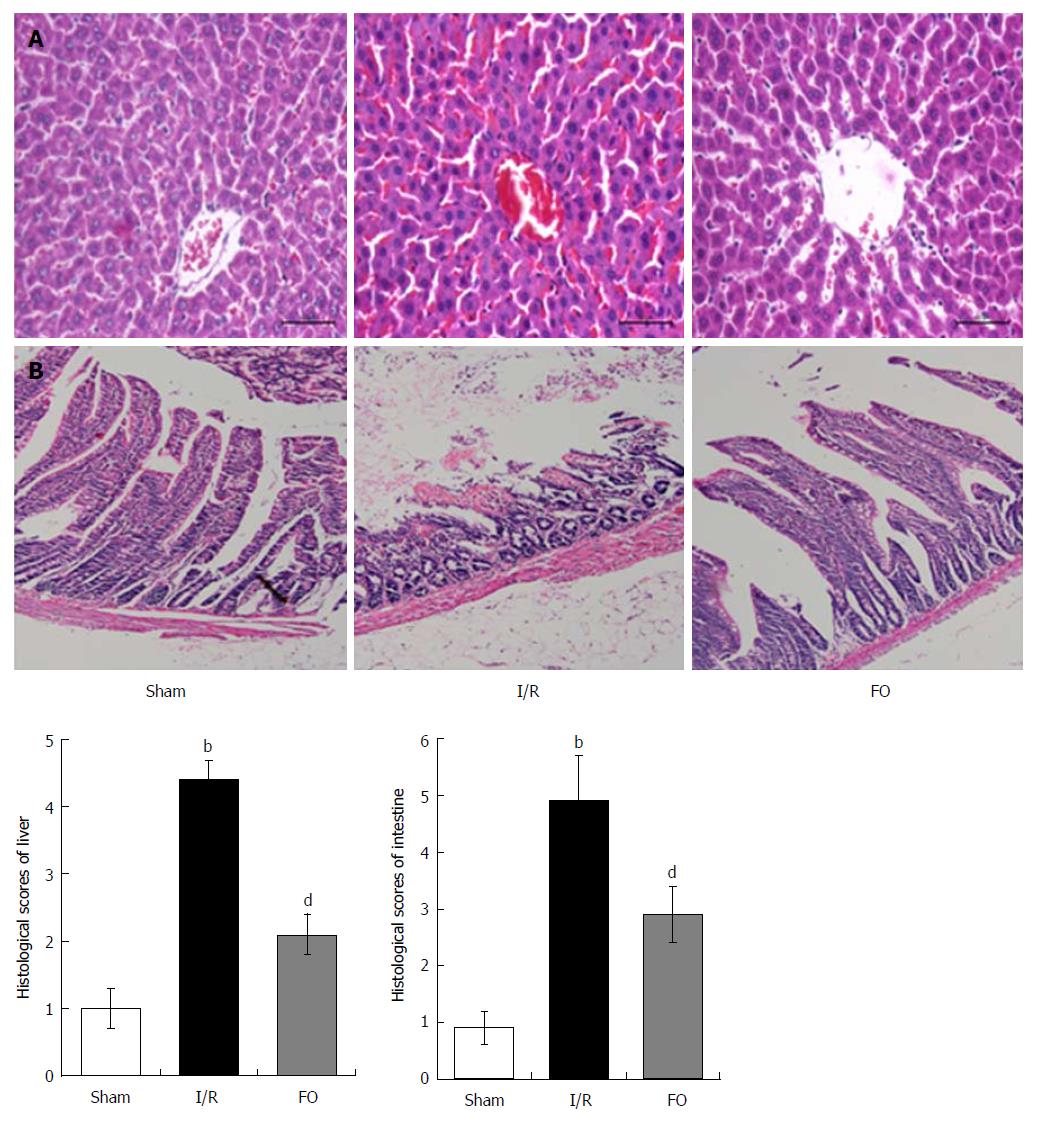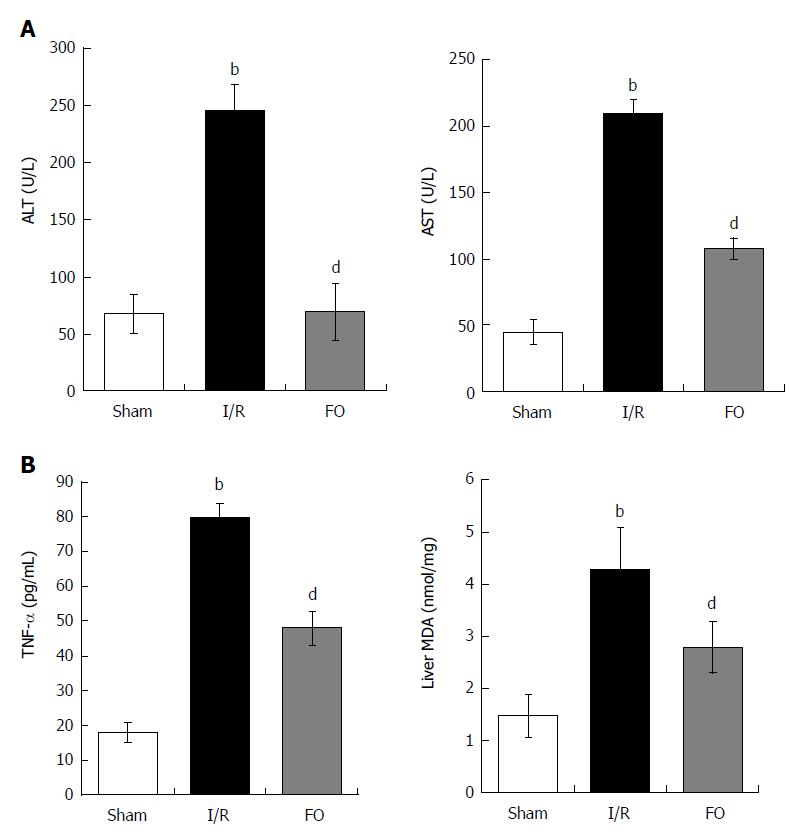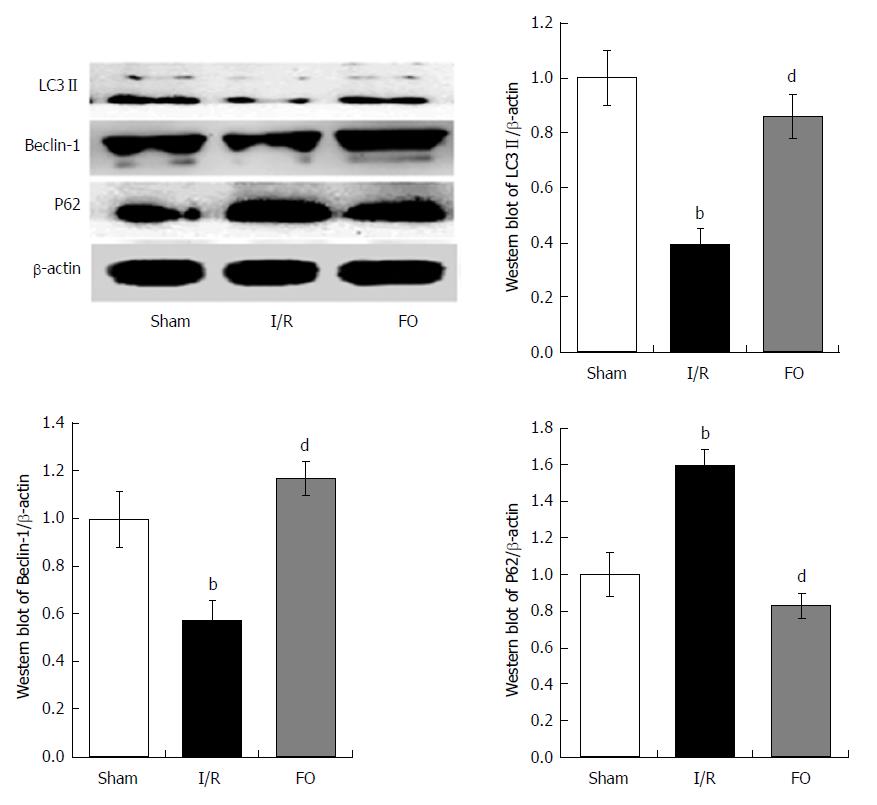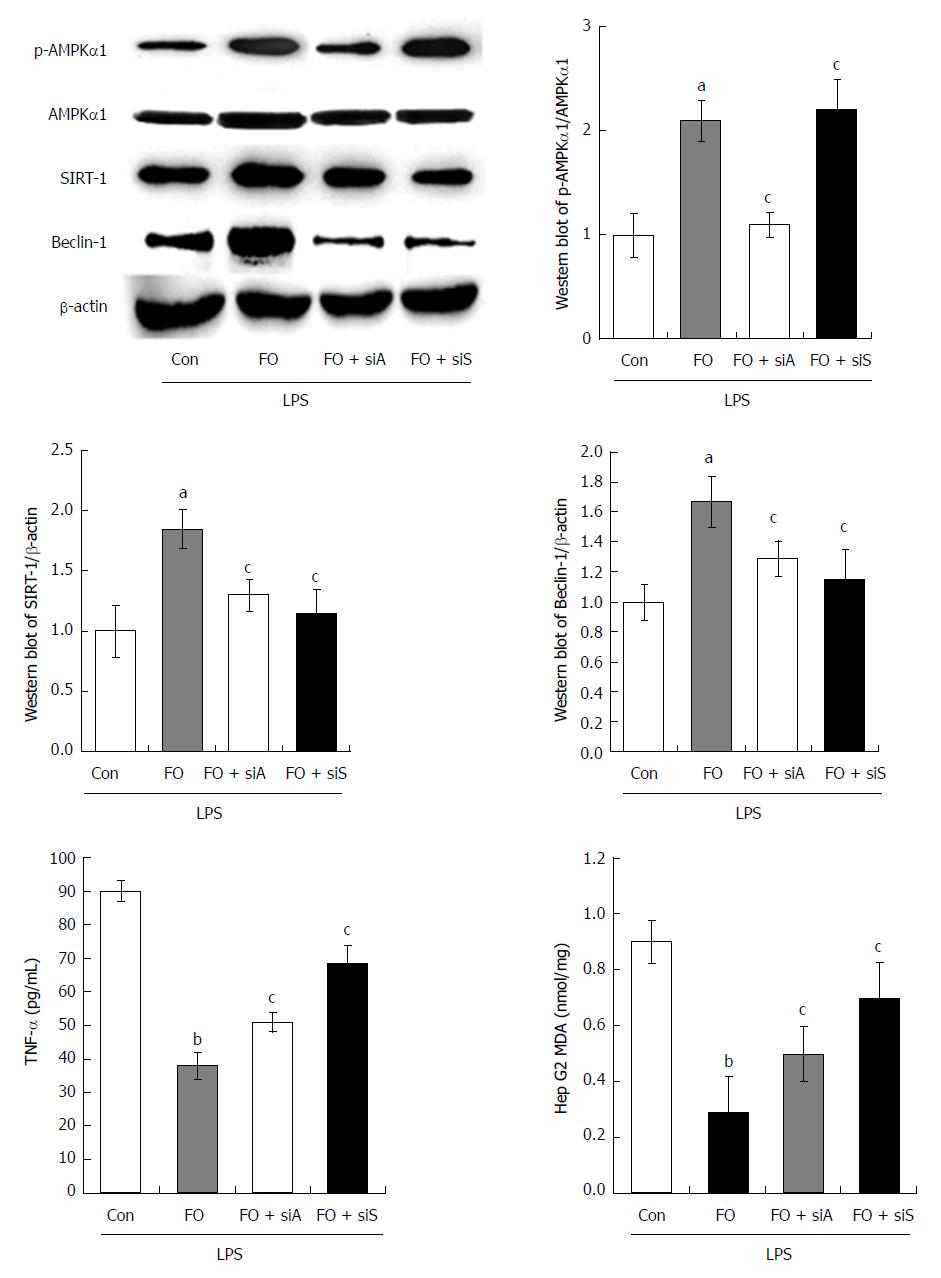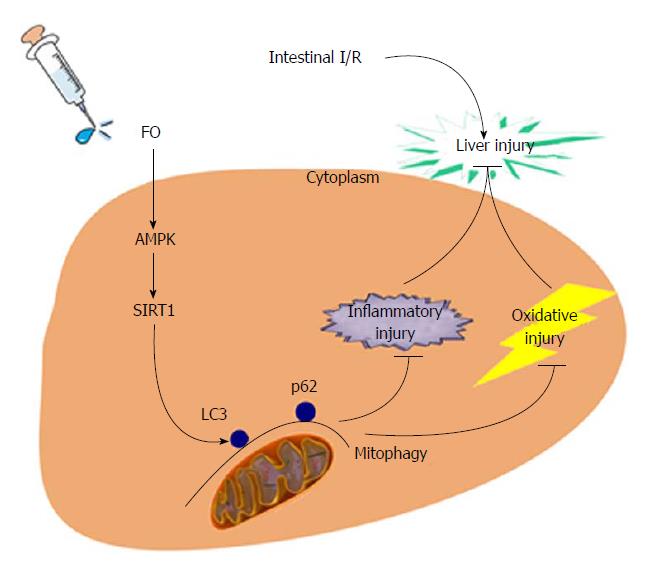Copyright
©The Author(s) 2018.
World J Gastroenterol. Feb 21, 2018; 24(7): 833-843
Published online Feb 21, 2018. doi: 10.3748/wjg.v24.i7.833
Published online Feb 21, 2018. doi: 10.3748/wjg.v24.i7.833
Figure 1 Fish oil emulsion improves I/R induced liver and intestinal injury histopathologically.
Pathologic changes of liver (A) and intestinal (B) tissues in different groups (mean ± SD, n = 8). bP < 0.01 vs sham group; dP < 0.01 vs I/R group.
Figure 2 Alanine aminotransferase and aspartate aminotransferase (A) as well as TNF-α and liver MDA levels (B) in different groups (mean ± SD, n = 8).
bP < 0.01 vs sham group; dP < 0.01 vs I/R group.
Figure 3 Western blot analysis of liver autophagy (LC3 II, Beclin-1, and P62) levels in different groups (mean ± SD, n = 8).
bP < 0.01 vs sham group; dP < 0.01 vs I/R group.
Figure 4 Western blot analysis (A) of liver p-AMPKα1/AMPKα1 and qRT-PCR analysis (B) of liver AMPK expression in different groups (mean ± SD, n = 8).
bP < 0.01 vs sham group; cP < 0.05, dP < 0.01 vs I/R group.
Figure 5 p-AMPK, AMPK, SIRT-1, Beclin-1, TNF-α, and MDA expression in HepG2 cells challenged with LPS, LPS + FO, LPS + FO + siAMPK, or LPS + FO + siSIRT-1 (mean ± SD, n = 3).
aP < 0.05, bP < 0.01 vs control; cP < 0.05 vs FO.
Figure 6 Schematic representation of the novel potential protective mechanism of fish oil in liver injury induced by intestinal I/R through the AMPK/SIRT-1/autophagy pathway.
- Citation: Jing HR, Luo FW, Liu XM, Tian XF, Zhou Y. Fish oil alleviates liver injury induced by intestinal ischemia/reperfusion via AMPK/SIRT-1/autophagy pathway. World J Gastroenterol 2018; 24(7): 833-843
- URL: https://www.wjgnet.com/1007-9327/full/v24/i7/833.htm
- DOI: https://dx.doi.org/10.3748/wjg.v24.i7.833









